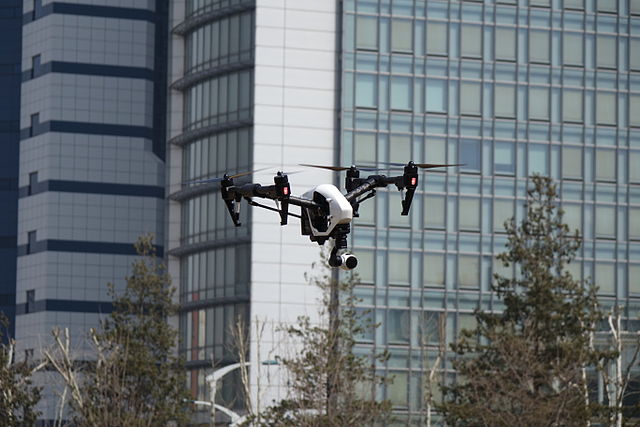Look up in the sky, it’s a bird, it’s a plane.
It’s an unmanned aerial vehicle, more commonly referred to as a drone. From taking breathtaking photos, being used in military operations, to being touted as the next generation of delivery vehicles, the drone is quickly becoming part of our day-to-day lives.

There is no better evidence that drones have become ingrained in the fabric of the new digital culture than the 300 drone light display that opened the official half time show for Super Bowl 51. To the aww and amazement of the 160 million viewers around the world, hundreds of drones performed a synchronized light show.
The drones, which are part of the Intel Shooting Star drone system, are roughly a foot-long and equipped with powerful LED lights capable of producing more than four billion color combinations. Using state of art coding and digital technology, each drone is also able to ‘dance’ independently or as part of a larger team.
“Lady Gaga and the Super Bowl creative team wanted to pull off something that had never been done before,” said Josh Walden, senior vice president of New Technology Group at Intel.
Walden went on to explain, “The potential for these light show drones is endless and we hope this experience inspires other creatives, artists and innovators to really think about how they can incorporate drone technology in new ways that have yet to even be thought of.”
Drone facilitated light shows are just the tip of the iceberg when it comes to this innovative technology, and 2017 will begin to reveal the magnitude of potential drones possess.
Recently, tech company Power Vision announced their latest product, one that promises to revolutionize the way we look at drones. The Power Ray, a submersible drone that can find and track fish and transmit real time data to the owner, is being marketed to fisherman and underwater biologists and explorers.
The Power Ray, which could play an invaluable role in combatting climate change, is able to monitor global warming levels, changing water temperatures and distribution of fish, ice and other underwater markers.
While the capabilities of drones have become seemingly endless over the last three years, the advancement can only be credited to the rapid evolution of drone technology. Even though it seems like drones have only been around for the last five years, companies like Canadian based Draganfly Innovations Inc. have been painstakingly innovating, developing and creating unmanned aerial vehicles since 1999, when they released their first RC quad rotor helicopter called the Draganflyer.
In the almost two decades since then, Draganfly has continued to push the boundaries of innovation through their robust and diverse line of robotic vehicles. Technopreneur and company CEO Cameron Chell credits Draganfly’s prolonged success to the business’s customer centric focus and its ability to foresee the next big thing.
“Our patented, compact, and collapsible airframe is lightweight and quick-to-deploy which makes it ideal for use in a variety of situations and environments,” noted Cameron Chell.
In the future, drones may even become an instrumental part of our food chain. Plan Bee, a tiny drone that is able to pollinate plants and trees recently began receiving a lot of buzz.
The innovative drone technology created by Industrial design student Anna Haldewang is designed to help alleviate some of the pressure put on the food chain since the decline of many insect pollinators.
Haldewang also believes Plan Bee can serve as an educational tool teaching people about the valuable role pollinators play in our ecosystem.
With all the innovation and investment in the sector the global market for drones is expected to exceed $11 billion by 2020.
